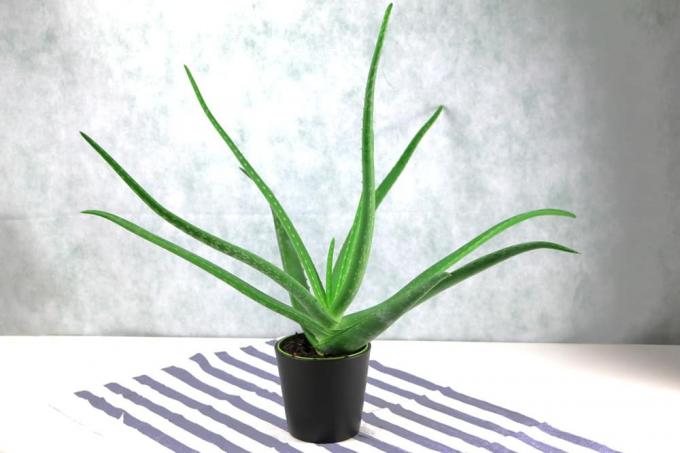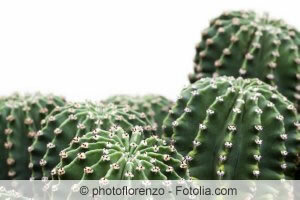

Table of contents
- When does aloe vera bloom?
- appearance of the flower
- Missing flowering - causes
- ingredients of the flowers
- use of the flower
When the aloe vera blooms, it's not just decorative. Both the flower and the leaves contain important substances that can be used for skin care, among other things.
When does aloe vera bloom?
The aloe vera flowers from about the third year after separation from the mother plant. However, flowering may be delayed depending on site conditions and care. When the aloe vera begins to bloom also depends on these factors. With a cool but frost-free hibernation, the formation of the inflorescences begins, so that the first signs can already be seen in December. Due to the slow growth, however, the flower is not fully mature until early spring.
appearance of the flower
The flowers of aloe vera are modified leaves of the succulent. They grow out of the middle of the plant and usually reach a significantly longer length than the rest of the leaves. Formed as an upright panicle, the flower can be yellow, orange or red.
Tip:
If the plant dies after flowering, in most cases it is not a matter of care errors or an unsuitable location. Instead, there is often a mix-up. Because the agave is very similar to the aloe both in the appearance of the leaves and the flowers.
Missing flowering - causes
If the aloe vera does not bloom even after several years, various factors can be responsible. Among other things:
- wrong wintering
- lack of earth volume
- insufficient nutrient supply
- too dark location
- too high humidity

Since these influences can ensure that flowering does not occur, site conditions and care should be checked carefully. A cool hibernation at 10 to 15 degrees Celsius has a stimulating effect on flowering. In order for these to grow and open, the plant needs at least 15 to 40 liters of soil. Repotting every two years is also advisable to ensure the supply of nutrients. In addition, the aloe vera should not be in rooms with high humidity, such as bathrooms and kitchens, or too far away from a window in winter.
ingredients of the flowers
Just like the leaves of aloe vera, the flower also contains valuable substances. These include, among others:
- mucopolysaccharides
- Sugars such as glucose, fructose and sucrose
- amino acids
- carbohydrates
- secondary plant substances
All of these substances are of crucial importance both for nourishing the skin and for nourishing the body. This results in the possible uses of the flowers.
use of the flower
Just like the leaves of aloe vera, the flowers can also be used for skin care. They can be ground up with a mortar and pestle, for example, or put in a blender. Used in creams and soaps, they provide the skin with moisture and nourishing substances. The pieces of the petals can also be consumed in smoothies, salads or yoghurt and thus have an effect from the inside.
Tip:
It should be noted, however, that the inside of the green aloe leaves has significantly more volume and can therefore be used much more easily for both skin care and nutrition.
 Home editorial office
Home editorial office
Learn more about succulents

Aloe species: 29 varieties | Edible aloe vera
The aloe is one of the Mediterranean succulents that are easy to care for both in the garden and on the windowsill. The best-known variety is aloe vera, which is also used as a medicinal plant. Other beautiful aloe varieties are presented here.

Flowering cacti: 10 popular species from A-Z | 5 without sting
Cacti are often understood to be spiky, flowerless monsters that come from the desert and therefore need no care. Cast from time to time, they do not shrink, but they are not an ornament either. Not even close! Many varieties have beautiful flowers.

Triangular spurge: care and pruning of the cactus
The Triangular Spurge is a succulent plant that is ideal for indoor cultivation. In appearance, this exotic resembles cacti, as well as in care. Due to the poisonous plant sap, special protective measures are required when cutting to avoid symptoms of poisoning.

Rhipsalis cassutha: is it poisonous? Instructions for care and propagation
Also known as the coral or rod cactus, the Rhipsalis cassutha is an extravagant, robust and easy-care houseplant. The special thing about this cactus is its filigree, hanging and strongly branched shoots. The many small white flowers are also pretty to look at.
Queen of the Night Cactus - Caring for Selenicereus grandiflorus
The Queen of the Night does not bear her name wrongly, because the fascinating blooming splendor of older plants is a special feature. If you want to experience the flowering, which only lasts a few hours, you can cultivate Selenicereus grandiflorus in your own home without much effort. Read more about the care needs of the plant.

Echinopsis Cacti - Species/Variety and Care Tips
Many a passion for collecting began with a cactus of the genus Echinopsis. The cacti, which are spherical at first but become columnar when they are older, enchant with their wonderful blossoms and beguiling scent. Immerse yourself in the multifaceted world of Echinopsis cacti and get to know the most beautiful types and varieties, including useful care tips.
